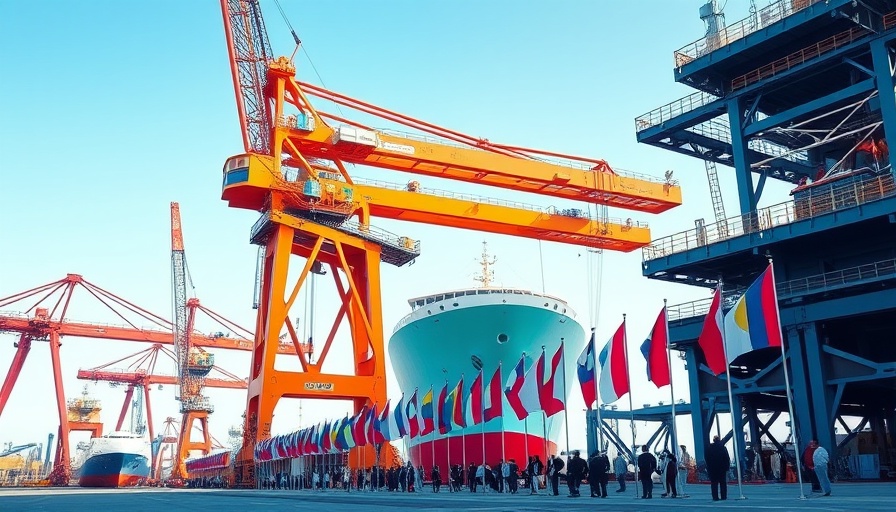
Canada's Future: High-Tech Icebreakers for Arctic Challenges
In a remarkable leap toward modernizing its nautical capabilities, the Canadian Coast Guard is gearing up for a significant upgrade with the construction of new Multi-Purpose and Polar Icebreakers. The project, taking place at Seaspan Shipyards in Vancouver, embraces advanced radar technology that is essential for navigating and protecting Canada’s vast northern territories.
The Technology Behind the Missions
At the heart of these icebreakers lies the collaboration between Sperry Marine and Terma A/S, which are supplying radar systems designed to withstand the rigors of Arctic conditions. Terma's SCANTER 4603 and SCANTER 6002 radars boast capabilities for comprehensive surface surveillance and air coverage, crucial for operations like search and rescue and emergency response in extreme weather.
Per Sørensen, senior sales director at Terma, noted, “This technology is engineered to meet the highest naval standards,” emphasizing its importance for situational awareness in hazardous environments. The collaboration showcases how cutting-edge technology is being harnessed to improve maritime operations in a nation challenged by climate change and increasing Arctic activity.
Meeting Emerging Demands
As the Canadian Coast Guard faces growing demands for effective maritime surveillance, Sperry Marine's involvement is fortified by over 40 years of support to governmental maritime operations. Colin Ross, naval sales director at Sperry Marine, reflected on the partnership: “This project is not just about technological advancement; it is about fostering long-term operational effectiveness and strategic collaboration.”
This statement captures the essence of contemporary challenges in Arctic regions—where safety, sovereignty, and environmental protection must coexist. The involvement of both Sperry Marine and Terma reveals an ongoing commitment to providing innovative solutions that ensure the readiness of icebreakers as they traverse difficult waters.
The Strategic Importance of Icebreakers
Canada's icebreakers perform crucial functions beyond just clearing paths through ice. They play a vital role in the political landscape of the Arctic, where international interest is surging and marine boundaries are being continuously assessed. The introduction of enhanced radar systems allows for a proactive approach to maritime challenges, ensuring that Canadian sovereignty is maintained in these remote regions.
What This Means for Maritime Safety
With enhanced radar technology, the Coast Guard is poised to improve maritime safety and oversight dramatically. This kind of surveillance capability fulfills a vital need—protecting the environment, maritime interests, and the communities that rely on safe navigation in these sensitive areas. By equipping vessels with the latest technology, the Canadian Coast Guard can respond better to crises and support other governmental operations.
Looking Forward: Future Implications for Arctic Navigation
The integration of advanced radar systems into these new vessels marks just the beginning of a series of innovations expected in Arctic navigation and operations. As global warming opens up previously unreachable territories, technologies like the SCANTER radar systems will become indispensable for collective navigation and environmental stewardship.
In summary, the partnership between Terma and Sperry Marine not only brings cutting-edge technology to Canada's icebreakers but also highlights the increasing importance of advanced maritime solutions. By harnessing precision tools to face the challenges posed by Arctic environments, Canada is taking a significant step in securing its northern borders while enhancing safety and operational efficiency.
 Add Row
Add Row  Add
Add 




Write A Comment